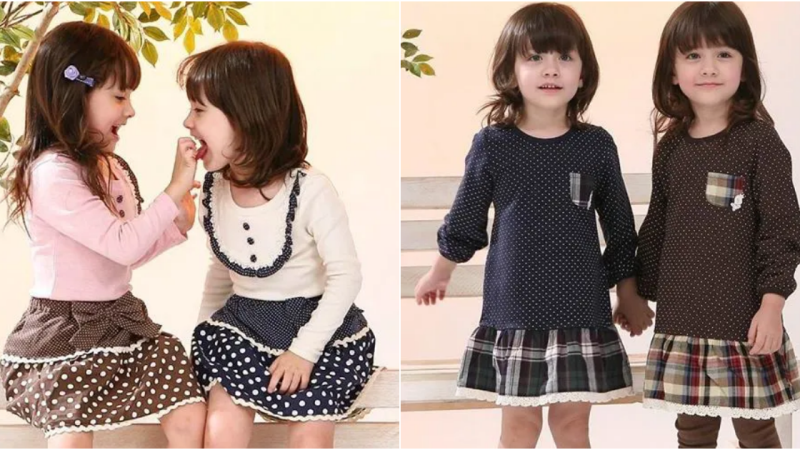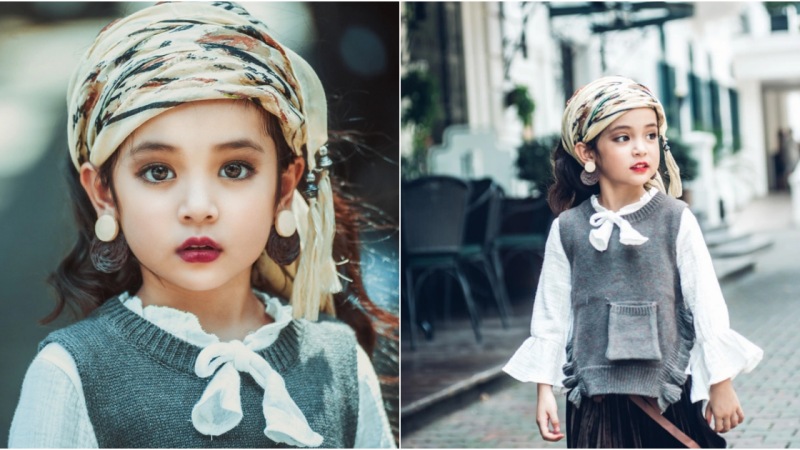Unbelievable Story: Doubts Arise as Woman Gives Birth to Black and White Twins, Mistakenly Believing She Received the Wrong Child

A mother who delivered both a black and an albino twin has faced skepticism due to their differing skin colors.
Judith Nwokocha, 38, a photographer from Calgary, Canada, shared that people often question the twins’ relation to her due to their distinct skin tones. In 2016, Judith gave birth to a black baby boy named Kamsi and an albino baby girl named Kachi. Her journey to motherhood was marked by eight years of struggle to conceive until she successfully underwent IVF. However, when she gave birth, she initially doubted the authenticity of having received the right baby.

Judith expressed, “Most people don’t believe they’re twins—it’s also the hair texture that confuses them. Someone has asked me: ‘where are her parents?’ I can see the look of shock in their faces when I tell them I’m her mom.”
Recalling her experience, she said, “I remember going for my first scan when they told me ‘you are having a baby’ and I said ‘no, I’m having two.’ I knew, without a doubt. The second scan revealed we’re having twins—I was told the twins might have Down Syndrome.”
“At 7 weeks, Kachi was always behind, very small, she stopped growing. I remember the doctors telling me she might not make it—I’m so grateful she did. She didn’t cry initially, so I was thinking, what’s going to happen, how is she going to be? I was shocked—I thought they had handed me somebody else’s baby, I didn’t believe she was mine. It never crossed my mind I was going to have an albino baby; we don’t have any in my family, nor my husband’s family. It was a real shock for me; I was thinking ‘what are they doing, why did they give me someone else’s baby?'” Judith added.
Eventually, she pondered, “Could it be she got somebody else’s? Other than the fact that her daughter is a different color, she looks exactly like her mom.”
Judith learned that the odds of having an albino child were higher when both parents are carriers of the Albinism gene. She initially worried about how Kachi would grow up and how others would react to her condition, considering the superstitions associated with albinos in her home country of Nigeria. Nevertheless, attending counseling sessions helped Judith navigate these concerns.
She said, “It took me a while to realize I’m going to be raising an albino. I was really concerned about what people were going to say; it’s not a very usual thing to have an albino and a black baby. I was also sad, worried about how she is going to go through society, how people are going to treat her. It didn’t affect my affection or love at all, of course.”
As for Kachi’s unique needs, Judith noted, “She can’t be in the sun too long without her skin getting burned. Her eyesight is quite sensitive, and she needs to see a specialist every 6 months.”
Despite their differences, the twins share a close sibling bond, and Judith believes they haven’t noticed anything unusual about themselves.
How is it possible to have black and white twins?
In this case, Kachi’s different skin tone arises from her inherited Albinism condition, whereas her brother Kamsi does not have it. Kachi’s skin tone results from Oculocutaneous Albinism (OCA) type 2, a condition that affects melanin production, impacting the eyes, skin, and hair. This inherited condition, most common in sub-Saharan Africans, African-Americans, and Native Americans, occurs when both parents carry the Albinism gene. However, black and white twins aren’t always due to inherited Albinism. In 2016, the UK witnessed the birth of its first “black and white” twins from the same egg to a mixed-race couple.









